Lithium battery fires and safety
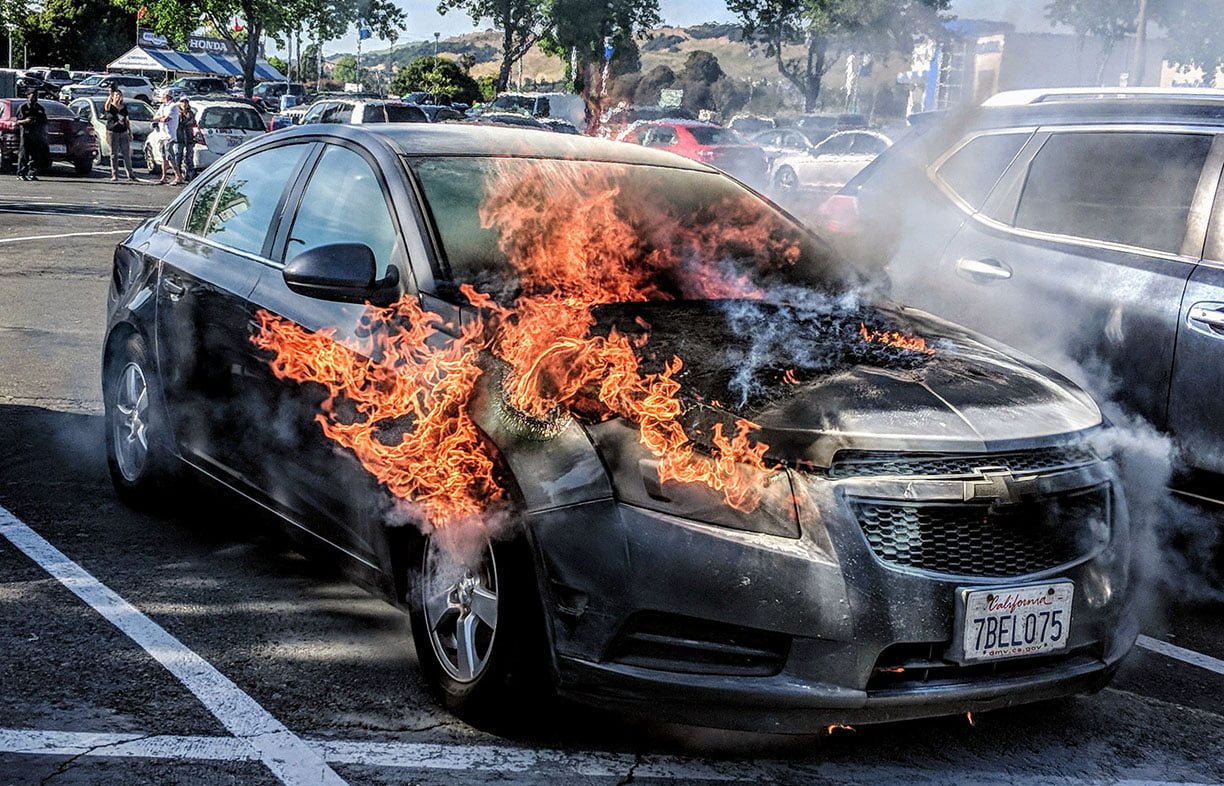
Image: Jim Heaphy, California (CC BY-SA 3.0)
Rechargeable lithium batteries are critical for our modern world, but they do have a somewhat variable safety history. Lance Turner looks at the issues and what to do about them.
Lithium batteries are at the heart of almost every modern rechargeable device, from mobile phones to power tools to cars. However, while most people realise that lithium batteries are, by and large, quite safe, battery fires can occur—and when lithium batteries burn, some lithium chemistries really burn. So why do batteries fail, and what can you do to protect your devices and your home from catastrophic battery failure?
What’s a lithium battery?
At the most basic level, batteries work by allowing electric current to travel across a potential gap between a cathode and an anode. The current moves through a medium called the electrolyte.
Various combinations of materials for anode, cathode and electrolyte have been used over the years; lithium batteries are a relatively new technology that use one of several lithium compounds as the cathode (positive electrode), graphite or silicon-based material as the anode (negative electrode), and lithium salt dissolved in an organic solvent as the electrolyte. Positively charged lithium ions move toward the cathode while the battery discharges, and then back toward the anode as the battery is recharged.
Compared to older battery types, lithium-ion batteries have a high specific energy (energy stored per unit mass, also erroneously referred to as energy density, which is actually energy stored per unit volume). This makes them especially attractive for scenarios where both light weight and efficiency are important. They turn up in all sorts of places, but the largest are in EVs. EV batteries have also been responsible for the most widely publicised lithium battery fires, and this article therefore focuses largely (but not exclusively) on EV batteries.
We should note that lithium ion batteries do not contain solid lithium metal—the lithium is always in the form of ions intercalated into other materials.
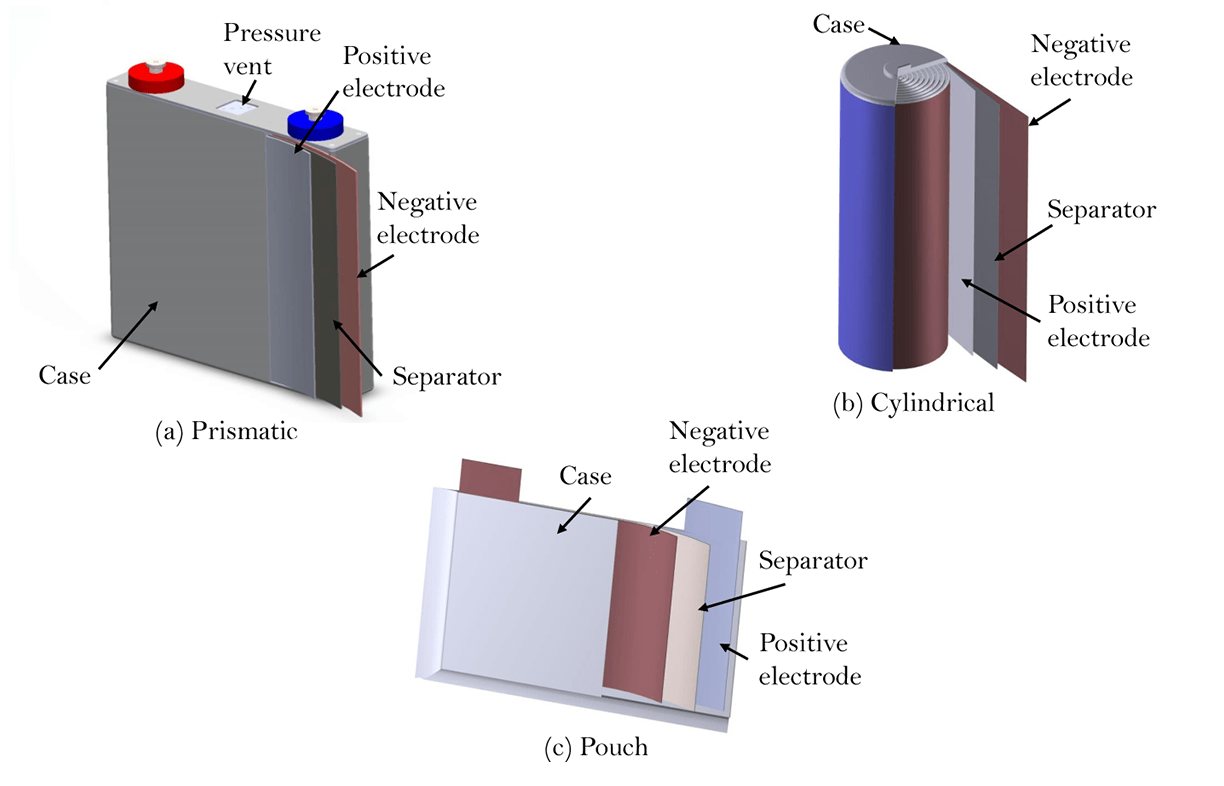
Image (modified): Lidbeck, A., & Syed, K. (2017). Experimental Characterization of Li-ion Battery cells for Thermal Management in Heavy Duty Hybrid Applications.
Why do lithium batteries catch fire?
That’s a good question, and we should start by saying that not all lithium batteries are the same. There are a number of different lithium chemistries in use, with various advantages and disadvantages, some being far less likely to fail and cause a fire than others.
The main reasons lithium batteries catch fire are that:
- Most chemistries, particularly the chemistries that have higher specific energy, use flammable organic electrolytes. This is actually what starts burning in many battery fires. Ignition is usually due to overheating, and the combustion generates flammable gases, which makes the situation worse.
- Inside lithium batteries, dendrites, which are long, thin whiskers of lithium metal, can form on the battery electrodes. These dendrites can penetrate the separator that sits between the positive and negative electrodes, causing a short circuit, producing internal heating that can cause thermal runaway (where the temperature passes a critical point and continues to increase due to breakdown of the cells).
- Some batteries have very rudimentary battery management systems (BMS). This term refers to the monitoring circuitry built into the battery pack itself; poor BMSes provide inadequate monitoring and control of battery temperature and charging.
- Poorly designed chargers are another issue. Some systems, particularly on cheaper personal electric vehicles like scooters and e-bikes, may not have adequate thermal management of the battery pack by the charger itself, instead relying on the (potentially inadequate) BMS for thermal management. This can result in the pack being charged when it is already too hot, again resulting in a thermal runaway condition.
- Abuse resulting in damage to a battery pack may go unnoticed or may not be apparent to the user. It may also come as the result of accidental damage, especially to small devices like smart phones and tablets. You may have noticed that along with the usual safety demonstration, in recent years airlines have started asking passengers not to look for lost mobile devices. This is why: if you end up crushing your smartphone in the seat mechanism, the result may be a fire, which is absolutely not something anyone wants to deal with while 10 km up in the air.
- A common issue is water ingress, especially into batteries on e-bikes, scooters and similar devices. Also, because scooters, electric skateboards and self-balancing hoverboards lack suspension, the batteries are unsprung and are subject to all the impacts and vibrations that the device experiences during use. This can result in fatigue cracks in circuit boards, solder joints and cell connections, all of which can cause battery failure.
Why are lithium battery fires such bad news?
Once lithium battery fires take hold, they are notoriously difficult to put out, especially if you don’t know what you’re doing. There have been several reports of fire departments being unable to extinguish burning EV batteries, which—amongst other things—led to Tesla issuing specific guidance to firefighters as to how to deal with such fires.
There are several reasons for the severity of lithium battery fires. For a start, they burn extremely hot, and have a nasty habit of spontaneously reigniting when you think you’ve extinguished them. They also burn for a long time. If there’s any elemental lithium present, it will react with moisture in the air to produce lithium hydroxide and hydrogen gas. Hydrogen gas is flammable. Very flammable.
Lithium-ion batteries contain little or no elemental lithium, but any that is present—it can form on the anode during the charging process—can present a very unwelcome surprise. The nature of the electrolyte used can also be a problem—some high-specific energy lithium-ion batteries use a flammable electrolyte that contains lithium hexafluorophosphate, which can decompose into the thoroughly unpleasant hydrofluoric acid during a fire. Lithium ion fires also produce a variety of other gases, including oxygen, which means that simply smothering the fire doesn’t work, because the fire essentially generates its own fuel. Several of these gases are flammable, and can ignite explosively, while oxygen, not flammable itself, causes other materials in the battery to burn much hotter and more rapidly. Both carbon monoxide and carbon dioxide are also produced, which can present breathing hazards to firefighters.
Generally, the best thing to do with a lithium fire is to stay a long way away from it and let it burn itself out. Of course, if it happens to be, say, the car or e-bike in your garage that’s on fire, this approach may prove unsatisfactory. See “What to do in case of a battery fire” below for more information on how to deal with a fire you can’t simply leave alone.
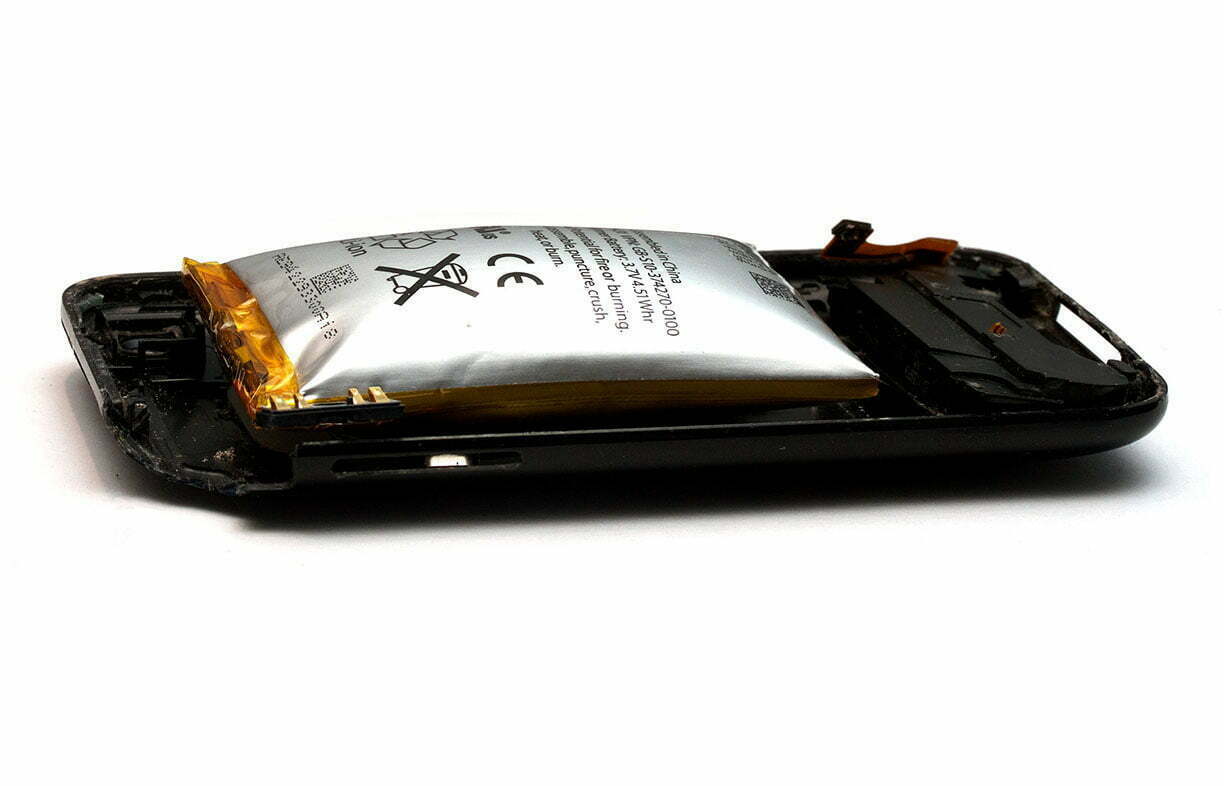
Image: Mpt-matthew (CC BY-SA 3.0)
Are some batteries safer than others?
Absolutely. It is unfortunate that the batteries with the highest specific energy—such as NMC (nickel manganese cobalt), NCA (nickel cobalt aluminium) and similar variations—all use flammable electrolytes and are prone to thermal runaway, and thus are the chemistries most likely to experience a fire. This is unfortunate because, due to their higher specific energy, these are the battery chemistries most often used in larger electric vehicles.
Thankfully, there are safer options, the most common being lithium iron phosphate (LiFePO4 or LFP ). These are rapidly gaining acceptance by major automakers as specific energy improves, and are vastly safer than the more flammable chemistries they replace.Unlike NMC and similar chemistries, LFP batteries do not produce oxygen during a thermal runaway event (and are also much more thermal runaway resistant due to their chemistry), greatly reducing their flammability, despite still using organic electrolytes.
Indeed, the standard range version Tesla vehicles made in China, for example, now all use LFP batteries, and BYD, one of the biggest battery and EV manufacturers in the world, uses their LFP Blade battery in all of their fully electric vehicles. Battery design can play an important part in reducing a battery’s tendency to burn, and BYD developed their Blade battery to have high specific energy (for its chemistry), structural strength and safety specifically for EV use. For an impressive comparison of the nail penetration test between an NMC cell and a Blade cell, see youtu.be/CGQwqWqzkNA
There are also other chemistries being worked on and approaching release into the market, including sodium-based batteries and solid state lithium batteries (where the electrolyte is a solid material, not a liquid or gel), so there is a general transition towards safer chemistries underway, at least for electric vehicles.
Some context on lithium battery fires in EVs
When battery fires do occur, they often receive a great deal of attention from mainstream media. As much as anything, this is because lithium battery fires are as rare as they are spectacular. However, it does tend to give the general public the idea that fires are more common than they are. When was the last time you saw an article about an internal combustion car catching alight? It’s rarely reported on, despite internal combustion engine vehicle fires being quite common—and certainly more common than lithium battery fires.
Data compiled in the US found that internal combustion vehicles are many times more likely to experience a fire than an EV. (Who would have thought that carrying around dozens of litres of flammable fuel would increase your risk of a vehicle fire?!) These numbers become even more striking when you realise that the data includes the EV fires caused by a known fault in battery cells provided by LG to GM and Hyundai for their EVs (more on this fault later).
While we couldn’t find much data on car fires in Australia, in the USA there are around 200,000 internal combustion engine vehicle fires each year. Extrapolating to Australia’s smaller car fleet would give a figure somewhere around 10,000 per year, although the actual number may be smaller, given that far fewer old cars remain on the road in Australia than in the US.
Notably, the risk is even greater for hybrids, which combine electric and ICE drivetrains (bit.ly/ICEvsEVfires).
Anyway, now that we’ve established that internal combustion vehicles are far more likely to experience a fire than lithium battery vehicles, let’s look at some examples of battery-generated fires, what caused them, and what was done to address them.
EV fires
There were a few fires in early Tesla vehicles that were primarily caused by damage to the battery pack, particularly damage caused by impacts from road debris to the batteries. In response to these fires, Tesla beefed up the battery shield to reduce the risk of penetrating damage from debris. Other fires in early Teslas resulted in updates to BMS software to limit charging rate and maximum charge levels.
The most recent reported-on fires in EVs have occurred in the Chevrolet Bolt EV in the US and the Hyundai Kona in several countries. After lots of blame-laying and excuses from both the car makers and their cell supplier, LG, the faults that caused these fires were traced back to cell manufacture: LG had been producing cells with two potential faults for some time. These faults—torn cell tabs, and folded separators between the cell plates—slipped through LG’s quality control for several years (they appeared in cars from at least 2017 to 2020). How neither LG nor the car manufacturers that used its batteries picked up the faults with random cell testing is hard to fathom—it really is inexcusable that this occurred for so long with no-one realising the potential dangers.
Regardless, LG eventually admitted fault, and it has cost the company over US$1 billion to supply replacement cells for around 140,000 Bolt and Konas EVs. LG has also since stated that it will be mostly transitioning to the much safer LFP cells in the coming years.
Again, it’s important to keep some context here: despite these faults existing for several years, and the faulty cells being potentially present in every Bolt produced up until 2021, only 18 Bolt fires occurred. That’s still quite a low failure rate for vehicles with such serious faults.
There have been fires in other EVs, including the Renault Zoe (13 fires from around 400,000 vehicles sold), BMW i3, Hyundai Ioniq, Porsche Taycan, VW ID.3, ID.4 and e-Golf, a few Nissan Leaf fires, a few Mitsubishi i-MiEV and Outlander PHEV fires, and even a few in BYD vehicles with Blade batteries. Of course, not all of these are battery fires, with many resulting from accident damage to electrical systems and battery cooling systems—events that are impossible to predict or avoid, just as they are with ICE vehicle fires.
See a fairly informative list of plug-in vehicle fire incidents at: en.wikipedia.org/wiki/Plug-in_electric_vehicle_fire_incidents
Hoverboard fires
A few years back, a new personal electric transport fad swept the word: electric hoverboards (self-balancing scooters). These two-wheeled vehicles were similar to the self-balancing Segway vehicles—just without the hand controls, the brakes, or the manufacturing quality. You just stepped onto them and leaned in the direction you wanted to travel, and—assuming you didn’t just fall over—the board’s drive computer worked out which wheels to power, and which way to spin them.
It all sounded great in theory, but like many great ideas, the implementation of those ideas left a lot to be desired. The boards were produced in large numbers, predominantly in Chinese factories with little or no quality control. The main issues were the use of low quality battery cells, poor battery pack assembly procedures, and inadequate battery management.
These potentially mobile fire hazards appeared all over the place, on eBay, Amazon and other online marketplaces; in pop-up online stores that sold cheap boards and nothing else; and in brick-and-mortar bargain stores. And then, inevitably, they started catching fire. As a result, a new standard for these boards was implemented in Australia—the Consumer Goods (Self-Balancing Scooters) Safety Standard 2018.
Fortunately, these gimmicky boards seem to have fallen out of favour. I personally consider them a disaster safety-wise, both electrically and physically, and see them as one of the most unsafe forms of transport ever devised.
E-bike and e-scooter battery fires
There have also been quite a few fires in electric scooters and electric bikes. Some of these have had catastrophic results, including the complete loss of homes. Again, quite a few of these fires have been caused by poor cell quality and low quality manufacturing. Other causes include battery pack damage from abuse, or corrosion from water making its way into poorly sealed battery compartments and corroding the cells and the inter-cell connects, which are made from nickel-plated steel.
As with hoverboards, another cause of fire can be poor battery management, especially during charging. It is not uncommon for users of these devices to commence charging their devices as soon as they have arrived at their destination. The discharging en route generates heat (batteries get warm as they charge and discharge due to internal resistance), as does charging. The result can be an accumulation of heat that, in the worst case scenario, results in thermal runaway.
Of course, this shouldn’t be a thing users should have to worry about. The battery charger and/or the BMS should prevent charging until the cell temperatures are within safe limits, but it seems to be a common issue that battery packs in these sorts of vehicles have limited or no temperature monitoring, often only having a single temperature sensor.
While this might sound adequate, if you have one cell that is performing less well than the others, and that cell happens to be furthest away from the temperature sensor, it could easily go into thermal runaway before the temperature sensor became warm enough to register a fault—by which time, it’s too late to prevent a battery fire.
The upshot of this is that many e-bikes and e-scooters have inadequate thermal monitoring, even those that cost several thousand dollars. Given the low cost of temperature sensors and monitoring ICs, there is no excuse for manufacturers to not include monitoring for every cell in the pack—but it’s still a common design issue.
Phone and mobile device fires
Fires in mobile devices are more common than desired, but still quite uncommon overall. A primary cause of these fires is the use of lithium polymer batteries for their low weight and high specific energy. Lithium polymer batteries can use various chemistries, as with other lithium ion batteries, but they differ from regular lithium ion cells in that they use a microporous electrolyte (usually a gel) instead of the traditional liquid electrolyte and porous separator. Because they are made in a laminated film process, they don’t need a rigid case to press the electrodes and separators together like lithium ion cells do. Instead, they use a simple plastic film pouch casing, making them lighter in comparison.
However, the removal of a structural case means that lithium polymer cells can swell up. Such swelling is often the first sign of problems with a lithium polymer battery. In phones, tablets and laptops, this can have the effect of causing the device’s screen or keyboard (for laptops) to flex or pop outwards. The case may also separate. If you have a device doing this, take it to a repairer for assessment.
Fires in mobile devices have been largely cause by failed lithium polymer batteries, usually due to overheating. This can happen if the device is placed in a hot place, such as a car dashboard, or if charged on a fast charger when already warm. If your device feels warm, set it aside on a non-combustible surface and let it cool before charging.
Unfortunately, there can often be no sign that there is a problem before the battery fails spectacularly, as can be seen in numerous online videos, including this one: youtu.be/edmFZbN1mGc

Images: Brimstone Fire Protection and some random eBay seller
How to charge safely
There are a number of factors that make for safe use and charging of devices using lithium cells. The primary requirements for safe and reliable charging, and long battery life, include:
- The battery should use high grade cells from experienced manufacturers—cheap cells are more likely to fail spectacularly or have shorter cycle life.
- The charger should monitor battery temperature before and during charging—no charge should happen if batteries are too warm, and charging should terminate or be ramped back if the battery temperature increases past a safe setpoint.
- The charger should terminate charge when batteries are full, and ideally, just before reaching 100% to maximise battery life.
- Lithium batteries should not be left on a permanent charge—when the device is charged, it should be unplugged. Note that many, if not most, devices cycle their cells when left plugged in. This means that they stop charging when full, then run the device on the battery until a certain level of discharge is reached (often to around 90% state of charge), and then the battery is charged again. While this is generally safe, it does keep the battery close to 100% charged, something not recommended for lithium ion batteries if lifespan is to be maximised.
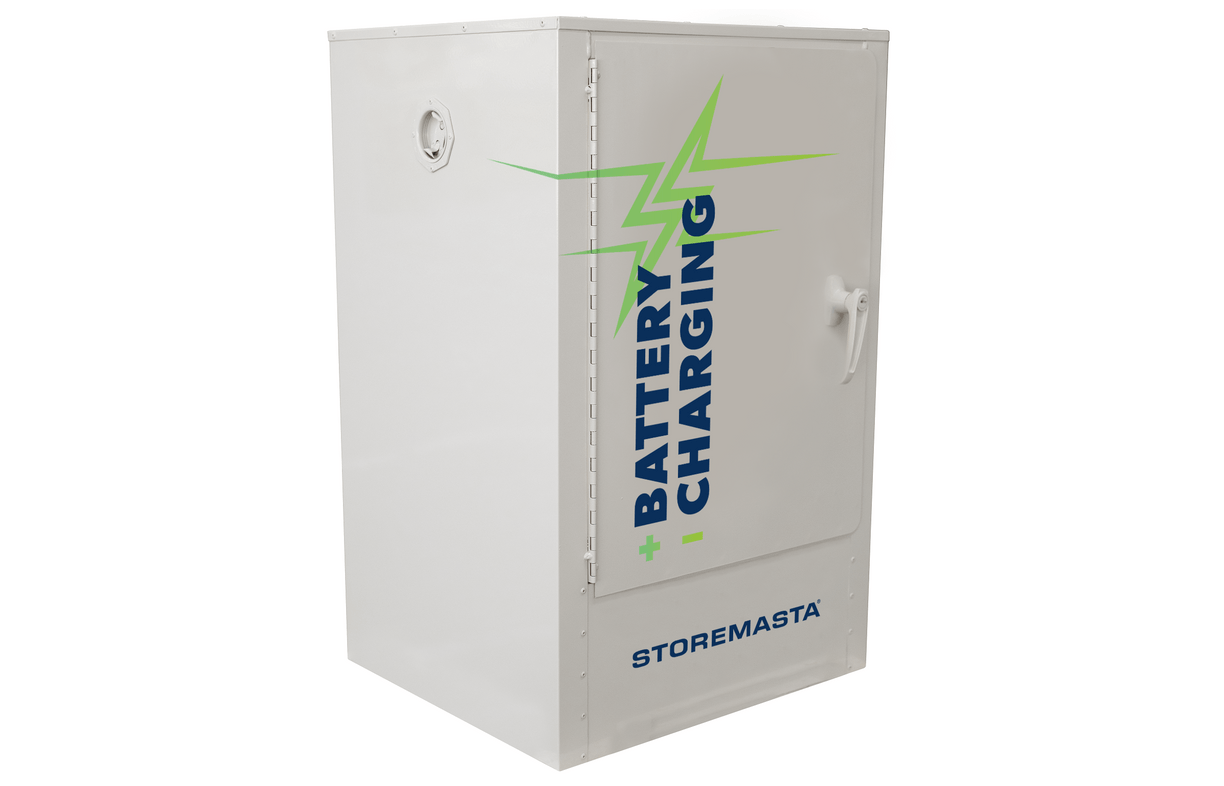
Image: Storemasta
Safe charging methodology
So, you have lithium powered devices and you want to charge them safely. How do you do it?
Ideally, all devices with combustible lithium batteries would be charged in a fireproof enclosure, and indeed, many people do this. It is particularly common with the radio-control crowd, who use lithium polymer batteries designed for very high charge and discharge rates. These batteries are known to fail with little warning, and so experienced users know to charge them in fireproof enclosures of some form. The same behaviour can be applied to all lithium-powered devices if you are concerned about safety.
For small devices like phones, tablets and laptops, you can charge them inside fireproof battery charging bags. These are readily available online, but the cheap Chinese-made ones common on eBay, Amazon and other sites are just fibreglass reinforced plastic and will not contain a battery fire or explosion. There are good quality ones around that have been fire and explosion tested, such as the LithiumSafe range made in The Netherlands but which ship worldwide (lithiumsafe.com and batterysafetybox.com), which includes bags for mobile devices, e-bike batteries, and cabinets, or the range from Brimstone Fire Protection, which are actually available in Australia from powdersafe.com.au. So don’t buy cheap and check reviews. Or you may choose to come up with your own solution (see “How to avoid fires” below).
If you can’t find a suitable bag, charge outside or on the verandah in the shade on a non-flammable surface—never charge a battery in full sun or on a warm surface! Also, never charge a battery immediately after heavy use—allow it to cool before charging. The only exception to this is if the charger is specifically designed to manage battery temperature. An example of this is the Briggs&Stratton 82 V cordless tool chargers, which not only won’t charge until the battery is at a safe temperature, they also force air through the battery’s perforated case to keep the cells cool while charging.
Never charge a battery that has been compromised in any way, through mechanical damage, water ingress etc. Damaged batteries are prone to failure with little warning.
If water gets into a battery pack, remove it from the device (if possible) and wait until it is fully dry inside. You may have to remove the outer wrapper, but that’s not something most people should do. If the battery is not removable, such as a tablet or phone battery, then you need to allow it to dry, which may take several days. Place the device in a fireproof container with some desiccant (available from hardware stores) and allow it to sit until all signs of moisture are gone.
If in doubt, take it to an experienced electronics technician. This particularly applies to devices which have batteries close to the ground, like electric scooters. If the battery compartment is not completely waterproof, water splash from the road can find its way to the battery compartment and wick into the battery through wires or battery wrap. If your battery does get wet, allow it to dry naturally, do not heat it above 40 °C under any circumstances.
We should also mention that you should only use OEM or OEM-approved batteries in your devices. There are cheap third party copies, but the quality can vary from excellent to scary, and you never really know unless it is an OEM or OEM-approved third party battery.
What to do in case of battery fire
So, what if you are unlucky and still have a catastrophic battery failure? How should you handle it? The first rule of any emergency situation is “Don’t panic”. If you panic and start running around trying to work out what to do, you will lose valuable time in dealing with the situation. Try to keep a cool head.
If the battery is smoking, it could ignite at any time. You should immediately do the following:
- Stop charging. If your phone or battery is smoking, use something as non-flammable as possible to hold it while you unplug it so that you won’t get burned should the battery explode, and hold the device so that there is no direct line of sight between your face and the device. A piece of clothing made of natural materials is the quickest solution, but don’t use anything synthetic as it may melt, causing you serious burns. If you have a fire blanket within a few seconds of reach, use that.
- Remove the battery or device from the house and place it outside in the open air away from anything flammable, such as on a concrete driveway or patio. Once done, move away from the device, as batteries can explode and send shrapnel considerable distances.
- If you have a CO2 fire extinguisher, it can be used to cool the battery, but battery fires can easily reignite, so it may not be worth wasting the extinguisher (they are expensive to replace/refill) if there is no danger to anything beside the battery or device. Often, if the item is small, just letting it burn out is the best option.
- Any class B or C extinguisher can be used on a lithium battery fire, you don’t need a lithium-specific extinguisher—those are made for batteries that contain metallic lithium, which are not found in consumer devices.
- If you have a fire blanket, place it over the battery or device, if safe to do so. This will help contain any exploding cells. Really, everyone should have a fire blanket readily available, they can prevent a minor fire becoming a major disaster, and they are very cheap—smaller ones start at around $20.
- Because lithium-ion batteries generally contain no solid metallic lithium, it is safe to use water to extinguish the fire, but remember that you need a lot of water quickly and continuously.
- Lithium batteries can reignite minutes to hours after the initial fire, so do not pick up a burned device, even if it appears to have stopped burning. Keep it isolated or immerse it in water completely.
Cover the battery or device with sand if you have it available—this will cool the device and help smother the fire. Alternatively, use a metal bucket or rubbish bin to cover the device. - Call the fire department.
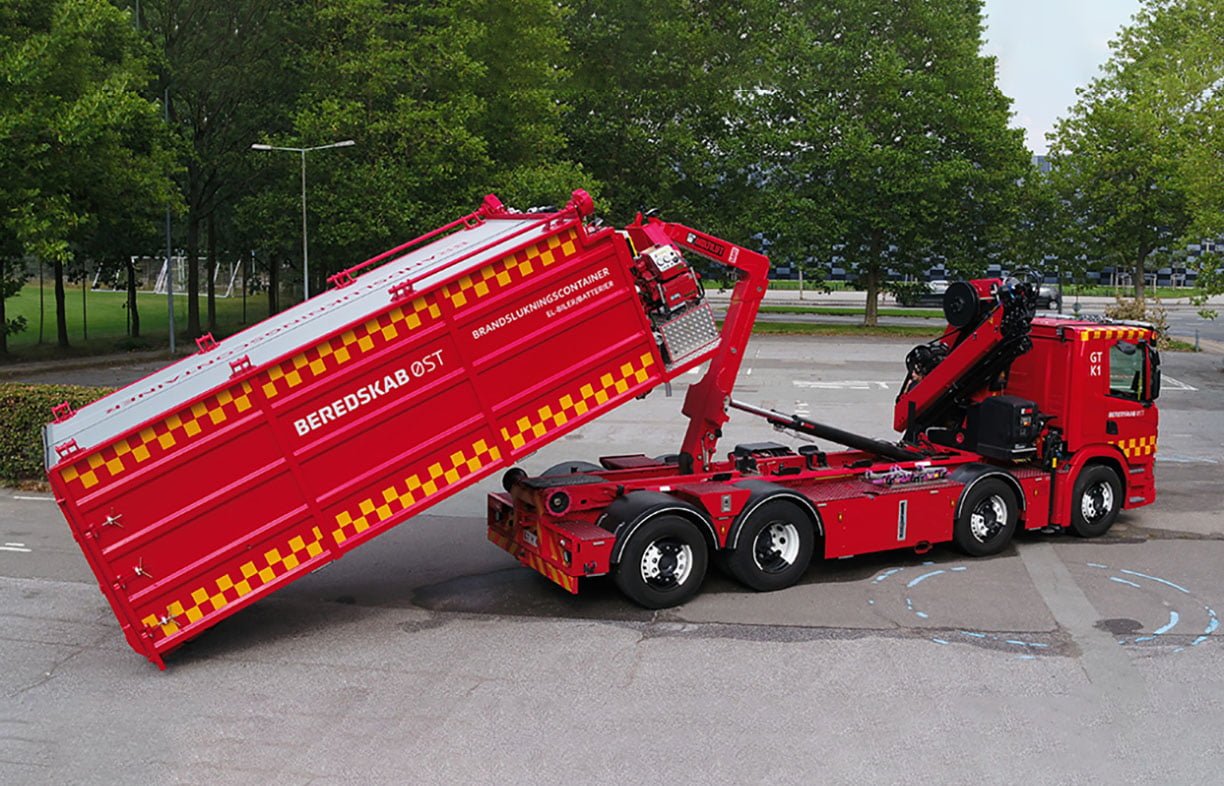
Image: cfpa-e.eu
How to avoid fires
Of course, all this is good to know, but it would be better if you never had a battery fire. There are things you can do that will reduce the chances of you experiencing such an emergency. These include:
- Treat batteries gently. Don’t mechanically abuse your phone, tablet or laptop by dropping or sitting on it. Similarly, don’t abuse an EV by riding over curbs, dropping an e-bike, or jumping an electric board. All these produce high G-forces and mechanical shock which can damage a battery.
- Give your batteries a cool-off period before charging (except electric cars, which have quite sophisticated battery charging and temperature control systems).
- Choose non-flammable chemistries if available. LFP batteries may have a little less capacity or be somewhat heavier, but they are much more robust and vastly safer than the more flammable chemistries.
- Charge in safety pouches for small batteries and devices. Note that they must be high quality, high temperature pouches. The cheap ones on eBay and similar sites usually offer little to no protection.
- Larger batteries like e-bike batteries need something more robust.
- A popular solution in the US is a steel ammo box lined with refractory board or blanket, although they are less common here. However, they are available from stores such as Aussie Disposals and other military disposals stores.
- Any heavy steel box, such as a heavy duty toolbox, can be lined and used, but it must have several times the volume of the battery that is charging in it, and it must have a few small holes in the top to allow venting gases to escape. Some e-bike suppliers can supply these, such as the Lunacycle Luna Charge Safe from the US. (We didn’t find any here in Australia, but if anyone knows of them here, please let us know.)
- Battery charging safes are available but can be expensive or difficult to find. A popular one in the US is the Bat-Safe (bat-safe.com) but it is difficult to find in stock in Australia. Also beware there seem to be fake copies of these units around. Another option, made here in Australia, are the Storemasta (storemasta.com.au) commercial-grade charging cabinets in 250 L (massive overkill for most people) and 30 L sizes. The cabinets contain multiple power outlets, are double walled steel and include self-closing, self-latching doors and fans. However, they are quite expensive, with the 30 L unit, which measures 800 mm x 500 mm x 450 mm, starting at a little over $3000 plus GST. Still, if you have quite a few batteries to charge and/or just need maximum safety, they are certainly worth considering.
- Fire safes are a relatively cheap option for battery storage. While designed to keep their contents safe from external fires, they also work in reverse, although are generally not tested and certified in this use. They are tightly sealed and so you will need to add some small vent holes to prevent a battery fire creating a high pressure inside the safe. You can also charge inside the safe if you drill a hole for a charging cable, but you must use a grommet to protect the cable.
- Other options that are used successfully for basic domestic lithium battery charging include the following; all of these methods should be used outside in an area free of flammable materials:
- Charging inside an enclosed BBQ grill;
- Placing your battery on a ceramic tile and placing a large ceramic flowerpot over the battery;
- Placing batteries inside the hollows of concrete Besser-type blocks and cover with a heavy tile;
- Simple enclosures made from bricks, heavy tiles or other refractory materials—these are readily available at your local garden centre or hardware store for minimal cost; and
- Inside a steel rubbish bin or large metal bucket lined with sand.
Like most modern technologies, there are risks associated with the use of lithium ion batteries, but with proper care and sensible operation of lithium ion battery powered devices, those risks are extremely low. However, it’s a good idea to be informed on the possible risks, how to mitigate them and what to do if the worst case scenario such as a fire should occur.
More info
Wikipedia lithium ion battery page: en.wikipedia.org/wiki/Lithium-ion_battery
Battery University list of lithium battery types: bit.ly/BUTOLB
Further reading
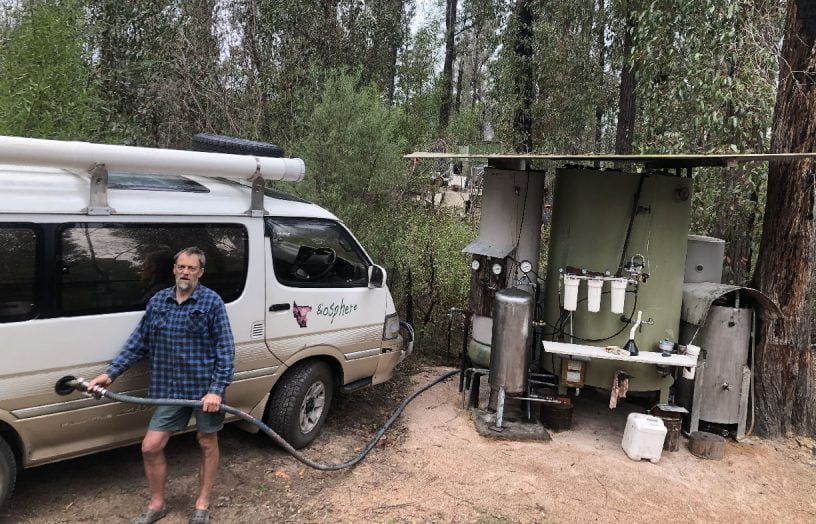 Transport & travel
Transport & travel
Biofuel vs battery
John Hermans gives his opinion on the best power source for electric vehicles.
Read more Electric vehicles
Electric vehicles
5B or not 5B
Large scale commercial solar farms can be time consuming to install and commission. Lance Turner looks at a company that has solved those issues.
Read more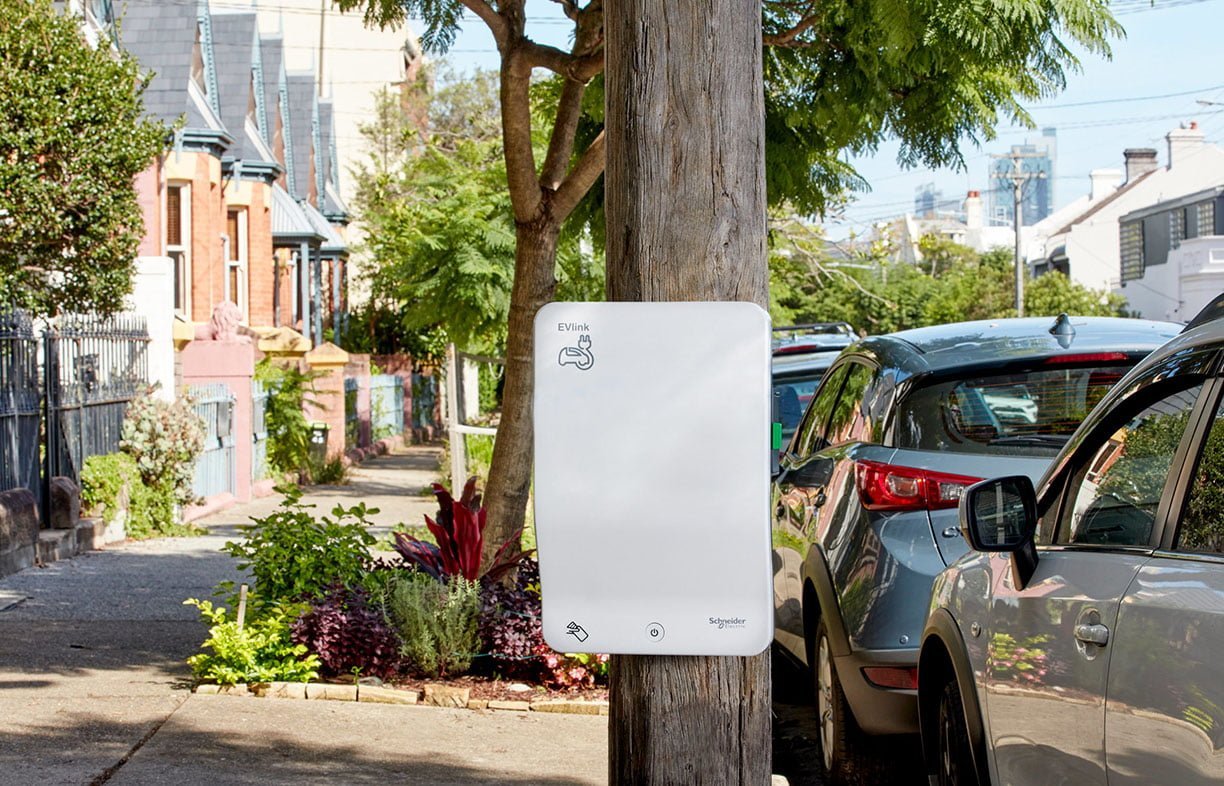 Electric vehicles
Electric vehicles
EV street charging trial
Rechargeable lithium batteries are critical for our modern world, but they do have a somewhat variable safety history. Lance Turner looks at the issues and what to do about them.
Read more

